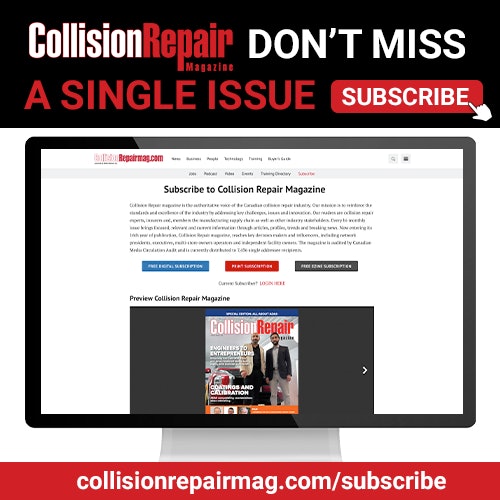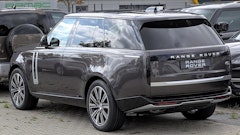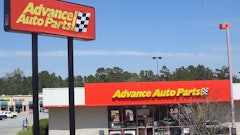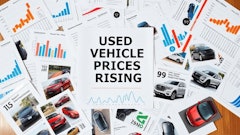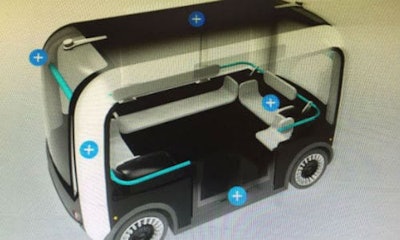
By Jeff Sanford
Toronto, Ontario — November 27, 2016 — The emergence of automated vehicles is a hot and trendy topic these days. Collision Repair magazine provides a weekly look at some of the developments in the field.
– Calgary has announced it will begin running a driverless shuttle between the Zoo LRT station and Telus SPARK. According to an article by CBC Calgary, the hope is to have the AVs running by 2018. Transportation Strategy Manager Chris Blaschuk said the, “… goal of the trial is to see if it could be incorporated into other parts of the city … we’ve been looking for different transit solutions for that area for some time.” Blaschuk also said the city wants to be, “…proactive in preparing for changes, rather than reactive.”
– An article on BBC News looks at the way in which insurance companies are beginning to think about how to use the vast amounts of data that will be collected by AVs. According to the writer the insurance industry is calling on carmakers to provide, “… more data showing who was at fault in accidents involving driverless vehicles. The insurers say drivers need to be able to prove that they’re not at fault if the technology goes wrong.” The article goes on to note that The Association of British Insurers wants cars to collect a, “… basic set of core data which would be made available after an accident. The data would cover a period 30 seconds before and 15 seconds after any incident. It would include the exact location of the vehicle, whether it was in autonomous mode or under the control of the driver, and whether the motorist was in the driver’s seat and had a seatbelt on … The ABI’s Director General says this data ‘would offer public reassurance by protecting motorists from being incorrectly blamed if something fails with their car, helping police investigations and supporting prompt insurance payouts.’”
– Tech titan Mark Andreesen (the guy who invented Netscape) gave an interview to the tech-focused magazine The Verge. Andreesen has developed a reputation as one of the sharpest thinkers on technology trends. His thoughts on AVs are fascinating. According to Andreesen AVs might not be developed as fast as many assume. It’s going to take a lot of computer programming to make AVs truly safe.
“[The] big reason why the Google’s self-driving car isn’t out yet. It’s a really hard challenge: you’re driving through the neighborhood and you’re going 40 miles an hour, and you turn left into an area that’s going 25 miles an hour, and there’s a crosswalk, and there’s a school, and there’s kids running around. That’s hard, and you can’t screw it up, and there are serious consequences to errors … There are lots and lots of edge cases, because roads move. What happens when there’s construction? You’ve got the guys with the stop and the slow sign and the flags. What’s the computer supposed to do? Think of how advanced the computer has to be to understand that as compared to understanding just a stop sign. And they have to be able to deal with that because those things pop up in random places all the time,” said Andreesen.
He went on to suggest that, “… it’s unlikely that there will be a mass rollout of self-driving cars all at once for all traffic scenarios. Therefore, [it’s] unlikely that there will be an instant, freeze-dried overnight Uber or Lyft competitor that is just self-driving cars … Think about a city with suburbs. Some percentage of the trip requests you could satisfy with a self-driving car. But to start with, that will be a small percentage of the total trips. A much larger percentage of the trips will still require a human driver. Maybe a human driver for the next two years, and then maybe a human monitor in the car, ready to take over when the computer punks out.
When it comes to the impact on cities, Andreesen says that, “There are mayors that would, for example, like to just declare their city core to [ban] human-driven cars. They want a grid of autonomous cars, golf carts, buses, trams, whatever, and it’s just a service, all electric, all autonomous … Think about what they could do if they had that. They could take out all of the street parking. They could take out all of the parking lots. They could turn the entire downtown area into a park with these very lightweight electric vehicles. No pollution, no noise, no nothing.”
– Just a couple of weeks after a self-driving truck in the US delivered a load of Budweiser beer China announces it is gearing up for a big overhaul of its road delivery system with fleets of self-driving long-haul trucks, according to a story on MIT Technology Review. The market for a self-driving truck in China would be huge. According to the story, “Across China, around 7.2 million trucks and 16 million drivers are responsible for intercity transportation of goods … This industry is worth more than $300 billion, and drivers account for around 40 percent of the costs incurred by truck companies. Some long-distance trips across China require two or even three drivers to complete. Autonomy would allow a single driver to sleep during long highway stretches.”
 |
|
| A prototype automated truck developed by Foton and Baidu. |
– Tech Crunch reports on another development in China: “Internet giant Baidu is fast-forwarding its own self-driving car tests with a new public trial of autonomous vehicles, including cars supplied by Chinese automakers BYD, Chery and BAIC. The public tests opened for passengers on Tuesday, and have ferried around 200 people … The driverless vehicles are equipped with Velodyne LiDAR, video cameras, millimeter wave radar and a computer brain to make sense of all that data developed by Baidu in-house and installed in the trunk.” Baidu is said to be targeting 2018 for the, “…first production commercial vehicles on the road using this tech in a non-test capacity, with a broader rollout, including mass production, targeted for 2021.”
– Will California lose the race to become the home of AV testing? The state of California and the state Department of Transportation are said to be in a war over regulation of robocar testing with the federal government. At a time China is allowing testing to happen in a regulation-light environment, this might not be the debate Californians want to hold up development of AVs in that region. According to a report on E&E Publishing, “Automakers are calling for California to pull back on proposed autonomous vehicle regulations, saying the state should defer to more flexible federal guidelines released in September … When the Department of Transportation released its safety guidelines for self-driving cars in September, the move was meant to assert federal jurisdiction over an issue for which state regulators were beginning to make their own rules … But the 112-page document did little to end the regulatory turf war over autonomous vehicles and may have instead sparked more concerns.”
In October, “California’s Department of Motor Vehicles released new proposed draft regulation that contradict parts of the federal guidance … Now, automakers are calling for the state to step aside and let the federal government proceed with its purposely flexible guidance. But safety advocates say neither proposal goes far enough to ensure road safety, and one key California senator said the Golden State should control its own road rules … Self-driving cars blur the traditional jurisdictional lines in which states govern drivers and the federal government sets vehicle safety standards. An autonomous car becomes its own driver all if not most of the time, leading to questions over who should govern what aspect of the vehicle.”
– A story in the Los Angeles Times talks about the amazing amount of money to be made off the data that will be generated by AVs. The report suggests that as “… cars exit the tunnel of the next 15 years, they’ll be like giant smartphones…Their sensors will capture sight, sound and motion and transmit the information to the Internet quickly and affordably. The $100-billion app economy built on data from smartphones would look small compared with the $750 billion in revenue produced around cars … The forecast has automakers buzzing.”

